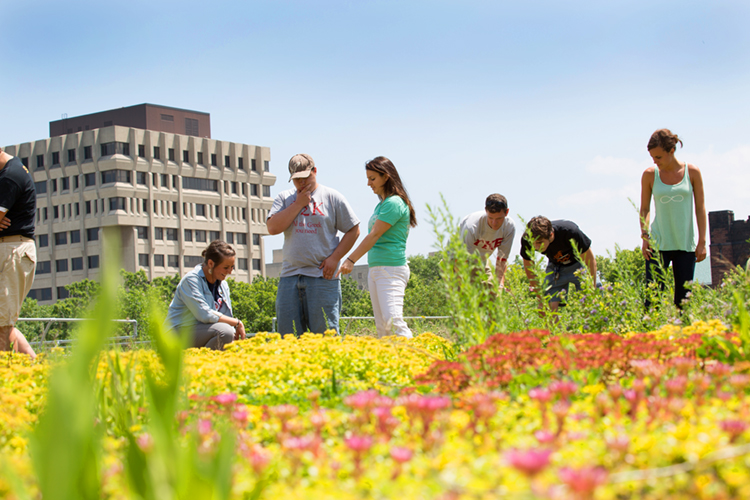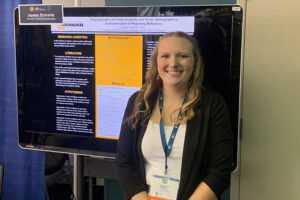On a hot summer morning, the thermostats “know” to air-condition the buildings when the first researchers arrive. Occupancy-sensitive digital temperature controls are just one cost-effective strategy that UW-Milwaukee uses to reduce energy usage.
When the state of Wisconsin challenged all UW schools to cut energy consumption by 20% from 2005 levels, the university’s Office of Sustainability took advantage of digital technology, solar panels, natural lighting and other solutions. The university has already exceeded its goal and cut usage by 27% across campus.
Now UWM has taken another step toward sustainability. On Feb. 14, Chancellor Mark Mone signed the Climate Commitment, pledging to further UWM’s environmental efforts.
Second Nature, an organization that collects data on carbon emission reduction in American higher education, maintains the Climate Commitment.
By signing, the university became one of nearly 600 universities in the United States committed to a two-pronged effort: to reducing their carbon footprints to zero and to building the capacity to adapt to climate change or other potential stressors.
“Schools and universities are in a position to lead in sustainability,” Mone said. “We’ll continue our leadership by working with Second Nature.”
In 2016, the university received a gold rating from the Association for the Advancement of Sustainability in Higher Education and a green ribbon award from the U.S. Department of Education.
“We’re going to keep building on what we’ve already achieved,” said Kate Nelson, UWM’s chief sustainability officer at UWM. “We’ve avoided millions of dollars in energy costs. Now we’re going to continue that with new programs and financial strategies.”
The Climate Commitment provides an opportunity. Because the university has already reduced greenhouse gas emissions by over 15% it retroactively qualifies for Second Nature’s carbon credit and purchasing program. Through the program, past reductions could fund future sustainability projects.
“Sustainability techniques are common sense, and they’re also the best practice for our university,” Mone said. “This commitment to climate management puts us in a better position to mitigate problems as they arise.”
To set a target date for reducing the university’s carbon footprint to zero, UWM will reach out to the Milwaukee community and form a task force from among the campus and surrounding communities.
“We always work with the larger community, so we’re really excited to see who we can involve,” Nelson said. “One of our primary concerns is working with both the university community and the larger, surrounding community.”
Sustainability planners will leverage UWM’s strength as a research university, Nelson said. The university already has hundreds of classes related to sustainability and one – Applied Planning Workshop, in the School of Architecture and Urban Planning — that will more directly help tackle the issue. In that class, students will help create decision-making tools and work with stakeholders on campus and in the community to advance the university’s sustainability efforts.







